By Andrea KleinFounder & President, Breathe with MD, Inc. “I had a lot of anxiety about it since the beginning of the pandemic, because I didn’t know how my body would react.” --- Nora Ramirez  Individuals living with Neuromuscular Disease (NMD) have varying degrees of anxiety about what would happen if they contract COVID-19. The concern has shaped our behavior and limited our activities for more than 22 months. Nora Ramirez, who lives in California with Facioscapulohumeral Muscular Dystrophy, (FSHD) and uses mechanical ventilation said, “I had a lot of anxiety about it since the beginning of the pandemic, because I didn’t know how my body would react.” The fact that Nora was hospitalized with three prior episodes of pneumonia made her even more concerned. In late November, she had to be tested for COVID-19. We talked about her experience and knew sharing it would help others with an NMD. It was the Sunday before Thanksgiving, and Nora developed a dry, itchy throat that made her want to cough. The next day, she was coughing a little more frequently, but it was a mild, dry cough without throat pain. By Tuesday, she was coughing more, so she got tested and expected to have results in two to three days. No pharmacies in her small town had same-day appointments for rapid tests. “By Wednesday morning, when I woke up,” Nora explained, “I didn’t feel good at all.” She had a lot more dry coughing with an additional symptom: her chest felt like someone was hugging it too tightly. This is something she’s experienced with pneumonia. She also struggled to get out of bed. Normally, Nora can independently use the restroom without difficulty. But that day she said, “Just going to the restroom was very exhausting to me. Around 3:00 or 3:30 p.m., I decided I needed to go to the hospital.” She went to the ER but didn’t think it would be COVID-19, because she was not running a fever and had not lost her sense of taste. Along with a blood draw to test for several things, clinicians tested her for COVID. She was positive, and the result of her previous test was still unknown. As Nora talked to the clinicians, she had to stop to take a breath every six to seven words. “My average normal resting heartrate was usually in the seventies,” she said, “and at times it was reaching 140.” Clinicians wheeled her on the stretcher into the imaging department for a chest x-ray and a CT scan with IV injected contrast to check for pneumonia and blood clots in the lung. “The doctor did inform me that the two major concerns from COVID were getting pneumonia or a blood clot in the lungs.” Her chest was clear, and she had no clots; but Nora described being exhausted just from breathing. While lying down, her heart rate would drop to a still very high 120 to 130 beats per minute. The doctor recommended a monoclonal antibodies treatment which involved a series of four injections, two on each arm, near her armpit, and one on either side of her belly button. Nora explained they were painful but not unbearable and that the skill of the nurse may have factored into this. “The injection was given sideways,” she described, and “liquid formed a little pouch or bubble under the skin.” It “absorbed fairly quickly,” and even with the discomfort, she did not regret getting the treatment. Nora stayed in the ER for five to six hours, also receiving IV fluids and potassium pills to address the low potassium caused by COVID. Her symptoms did not worsen much more, but she did experience what the doctor advised, that “COVID-19 symptoms get better and then worse on day 6 or 7.” “They did not get severely worse,” she shared, “I just had a little more coughing and sleepiness or tiredness around those days.” The doctor explained she would need to return to the ER, if she could not speak more than three or four words without taking a breath. Most symptoms, including a runny nose, left after a week. But the fatigue and increase in heart rate, triggered by sitting upright and getting out of bed, persisted. She joined an FSHD group on Facebook and asked if anyone knew how to “lighten the load on her heart.” Their suggestions were to use her BiPAP (bi-level mechanical ventilation) during the day or as much as possible, even though prior to COVID, she normally only used it for sleep. This immediately reduced her heart rate to 100. She used her mechanical ventilation all the time, except for when she was using the restroom or eating. Even after this period of bedrest, when Nora and I talked on December 26, she was still experiencing tiredness that was unlike her usual FSHD related fatigue. “I went to the doctor just a few days ago, and it felt very exhausting to walk to the main lobby.” she said. Nora explained that her legs seem to be weaker and tire more easily now. If she gets up too quickly, “It’s like my legs just give out, like they turn to noodles, and this had never happened before.” She feels as if her knees are wobbly or not secure, something her mother experienced after she too recovered from COVID-19 at a different time. The doctor told her it could be the bedrest or "the way COVID took a toll on her body" and that she’s still recovering from it. He said that some can have these feelings of exhaustion for months beyond their illness. Nora shared with me, “Last weekend, I did go to the ER again. I pushed it maybe a little too far, because I was walking a lot the day before.” She woke up nauseated, was blacking out, experiencing chest tightness, and thought maybe these were heart related symptoms. It turned out she was okay but did have to stay in the ER for eight to 10 hours. They did an Electrocardiogram (EKG), chest x-rays, a lot of blood work, and an Arterial Blood Gas (ABG) that measures Oxygen and Carbon Dioxide levels in the blood as well as the body’s acid-base (pH) level. I asked Nora if at any point during either ER visit whether clinicians tried to administer supplemental Oxygen. (To learn more about the potential dangers of unventilated supplemental Oxygen for an individual with an NMD who has weakened breathing muscles, please see https://breathewithmd.org/oxygen-caution.html.) The first ER had her prior medical records and did not try this. The second hospital’s ER did not have her medical history but administered nothing, not even IV fluids. Nora told clinicians she should not be given Oxygen, that she uses a BiPAP, and she recommended they do the ABG test. (She had recently reviewed the Breathe with MD, Inc. website, joined the Breathe with MD Support Group, and learned from group members that others with an NMD had suffered when supplemental Oxygen was used without ventilation assistance.) In her second ER visit, clinicians refused to place Nora on bi-level ventilation after she left her own BiPAP at home in the rush to get there. She said, “I feel they really did not understand Muscular Dystrophy. They said if my Oxygen levels were good, I didn’t need my BiPAP. I tried to explain it in several ways, but they kept referring to my Oxygen levels being perfect. The doctor sent in a respiratory therapist, and she too said ‘no’ to the idea of a hospital BiPAP.” They treated Nora as if she didn’t know anything, “Like I was loopy or something.” They also did not agree with her method of staying conscious during her fainting episodes. A doctor had taught her as a child that when ammonia (an ingredient in smelling salts), is not available, sniffing rubbing alcohol or distilled vinegar would keep her from fainting. “I didn’t know what would happen if I blacked out,” Nora shared, “so I kept sniffing it [rubbing alcohol] every time I saw black, losing consciousness. I got a lot of negative comments from the nurses there.” They did not understand why she was using it, and one nurse questioned if she was drinking the rubbing alcohol. This second ER experience required Nora to speak up for herself, and it was stressful navigating symptoms along with concerns that clinicians would not provide the right care. She was discharged home without clear answers for the cause of her symptoms and is continuing to heal. Below is a list of things Nora shared that may or may not have influenced her recovery. Check with your medical provider about any home treatments, vitamins, supplements, or prescription medications that may be best during any illness.
Editor's Note:
Are you an individual living with a Neuromuscular Disease (NMD) who uses mechanical ventilation and have a story to share about hospitalization, illness, emergencies, advanced medical testing (MRI, CT scan, etc.), or surgical procedures? Start the process of helping others in the NMD community by telling us about it at https://breathewithmd.org/storyform.html, or send an email to [email protected]. If your story is selected, we can assist by interviewing you and writing your "Living Ventilated" blog post.
Diane Semprevivo
1/13/2022 01:48:51 am
Excellent article. I am glad you are recovering. I can relate to your experience of trying to explain FSHD to so called "health care professionals". It is so frustrating and detrimental to adequate and optimal care.
Nora
1/19/2022 03:05:20 am
I just wanted to clarify (based on a comment someone left on the fb group about the article) Comments are closed.
|
AboutLiving Ventilated celebrates those in the NMD community who use assisted ventilation. Archives
August 2024
Categories |
Note: This website should not be used as a substitute for medical care. For medical care or advice, please seek the care of a clinician who specializes in the breathing issues of those with Neuromuscular Disease (NMD).
Web Hosting by Hostgator

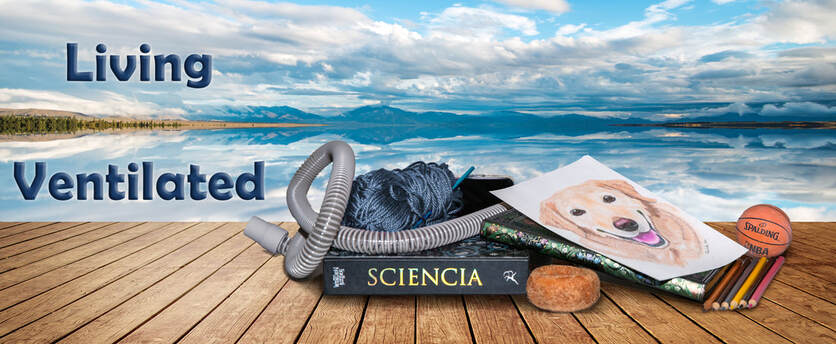
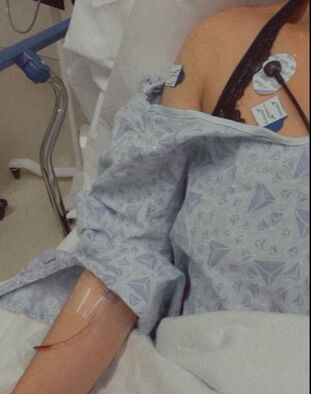
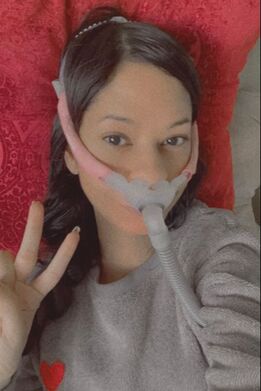
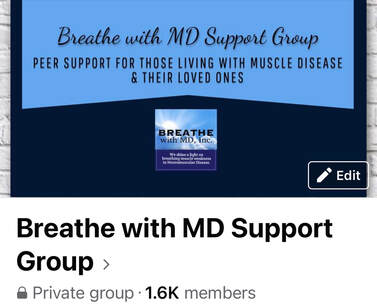
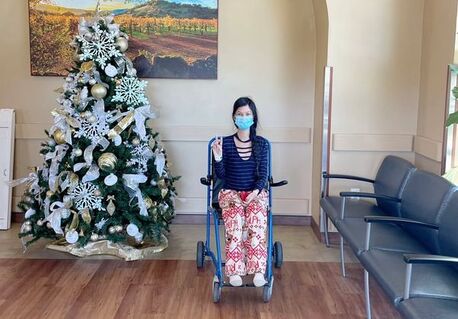
 RSS Feed
RSS Feed